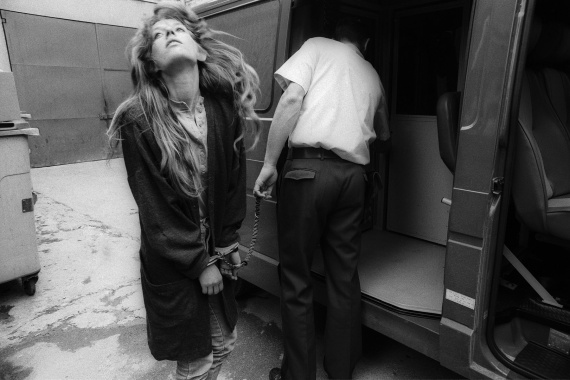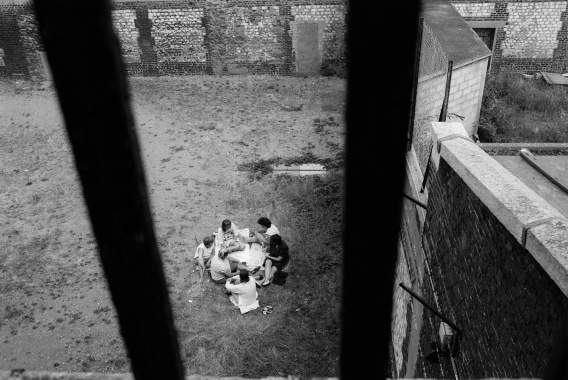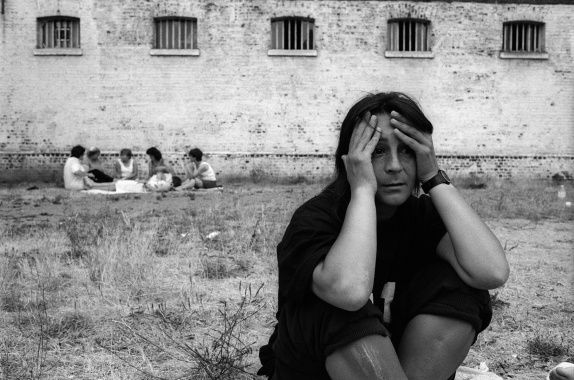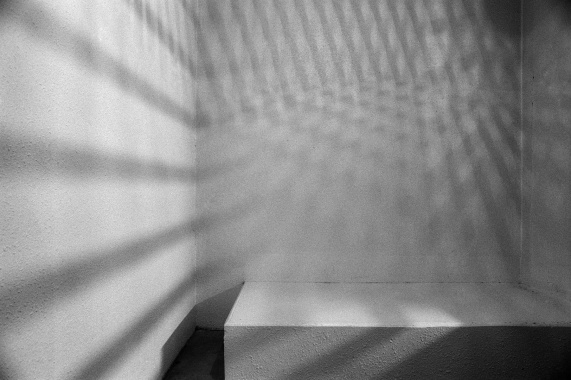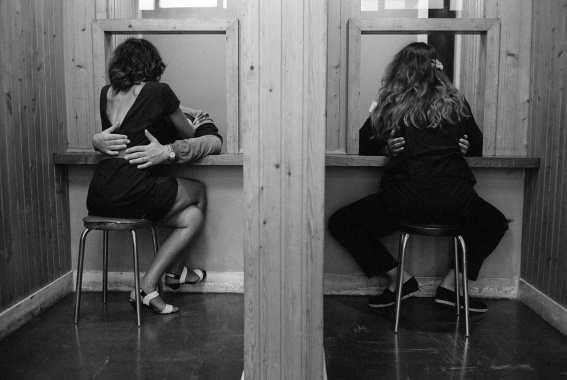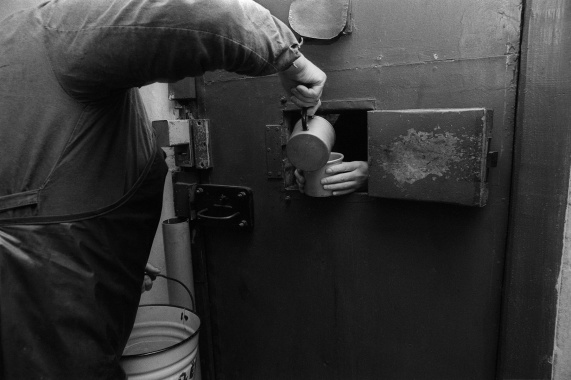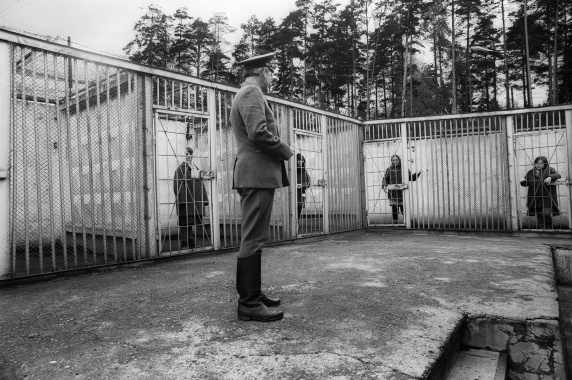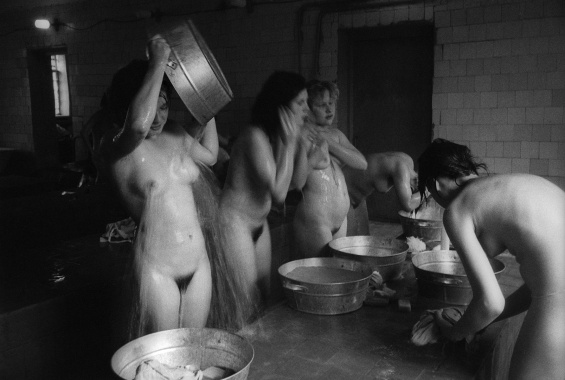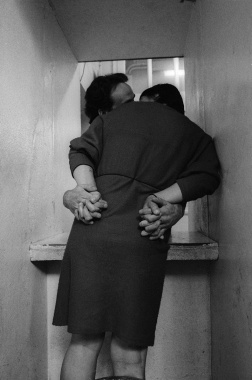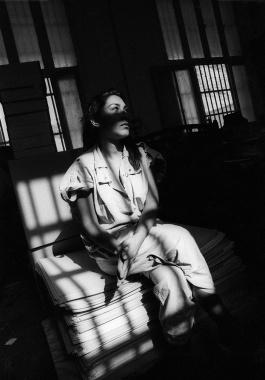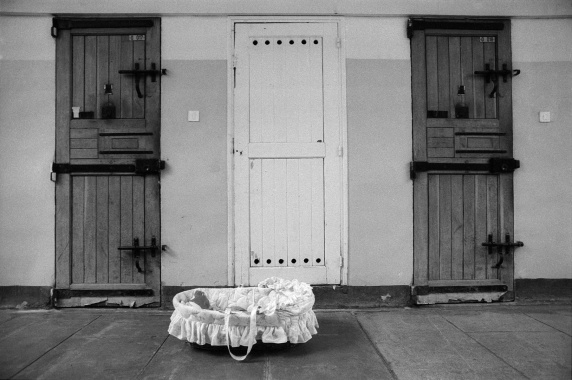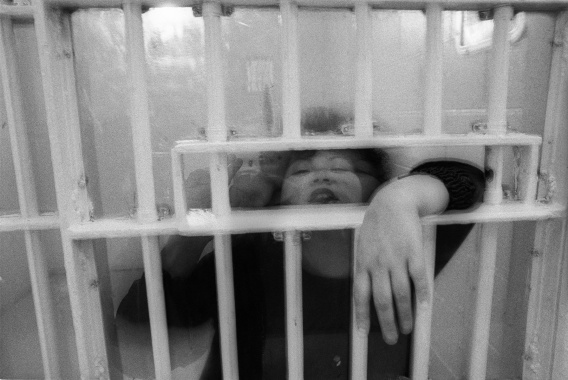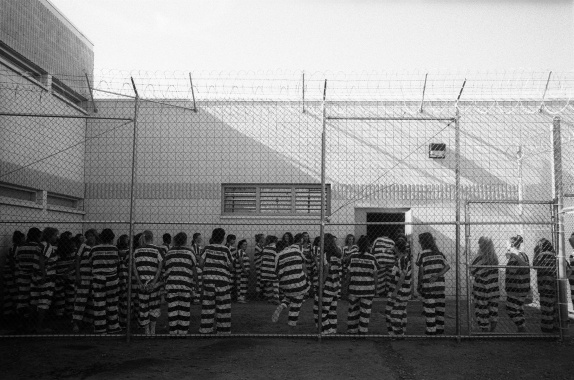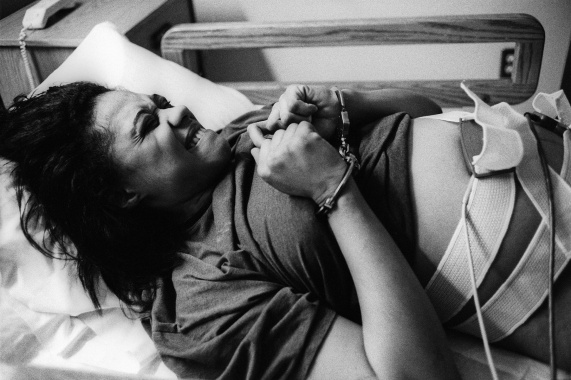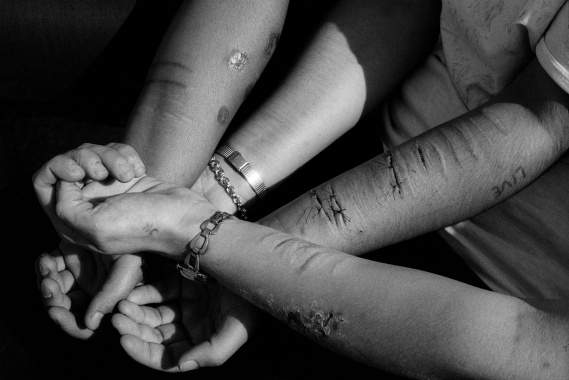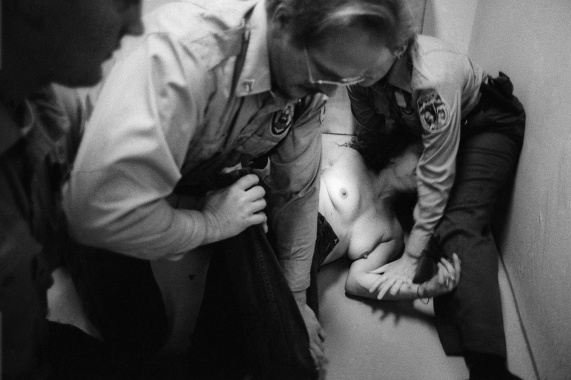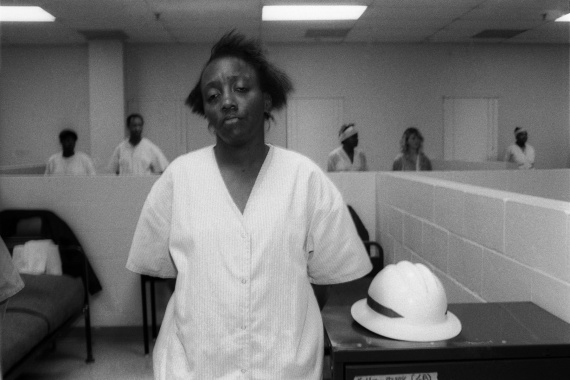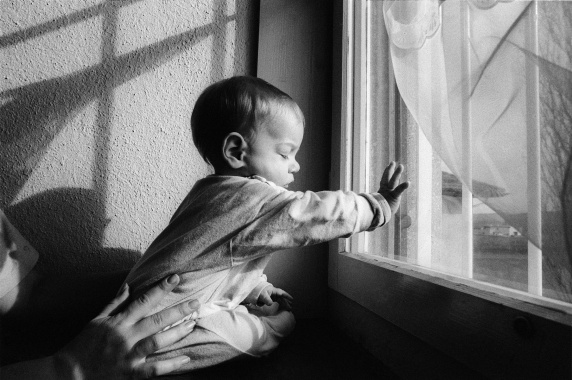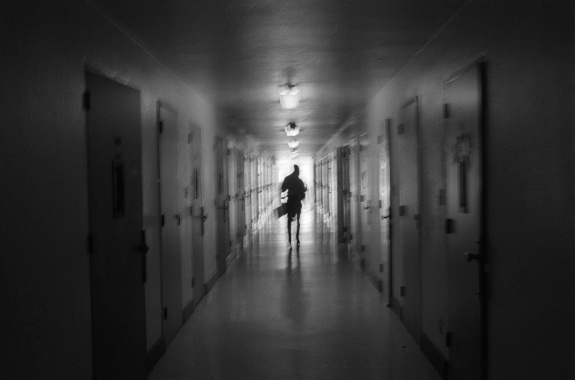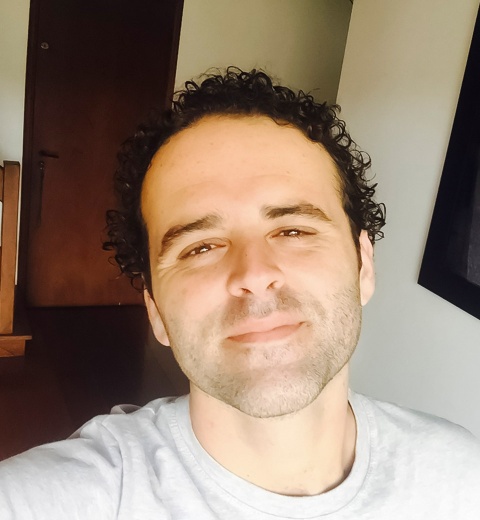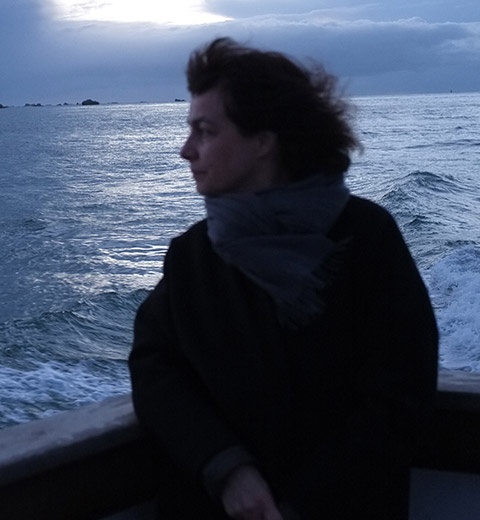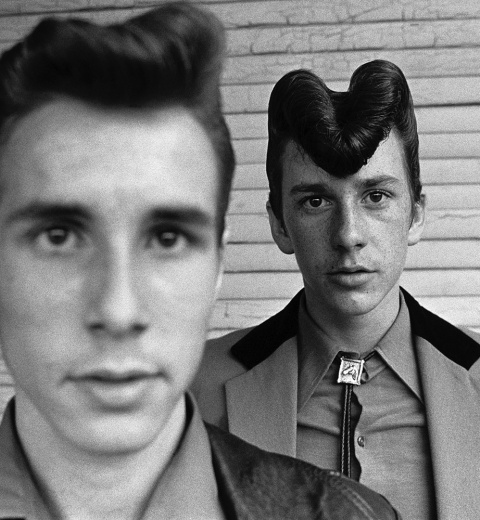LEICA interview with Jane Evelyn Atwood, February 2017.
Twenty years ago, the US American photographer was honoured with the Leica Oskar Barnack Award for her series about women’s jails. For nine years, she had been working on the project with dedicated perseverance and energy. Many obstacles had to be overcome, and numerous permits were needed until she was able to spend at least one week in each of a total of 37 women’s prisons, documenting the daily lives of the inmates. The series was created in nine countries, including the USA, France, Russia, India and the Czech Republic.
Jane Evelyn Atwood has already devoted herself to complex and difficult topics in her freely developed picture essays and reports. Social issues are the focus of her work. She photographed series about prostitutes in Paris, blind people, homelessness, AIDS. The Oskar Barnack Award, endowed back then with 10,000 DM, was also an important honour for her. We talked with the photographer.
Twenty years ago you were honoured with the Leica Oskar Barnack Award. Can you describe in retrospect the significance of this award for you personally, as well as for your career?
Jane Evelyn Atwood: The money involved would have been important to me at the time. It costs money to do the projects we do and a prize or grant is what enables us to continue working.
The prestige was also important. Many photographers I admired had already received the Leica Oskar Barnack Award and I imagine I wanted to know if my work held up to theirs in the eyes of a professional jury.
The recognition was important. It validates work, it makes other people notice work that otherwise might not be looked at or taken seriously, it can open doors, it puts us in contact with new people, but, most of all, the recognition I got from winning the award made me feel good about what I had been working so hard at, and for so long.
How did things go after 1997? What changed and how important did Leica become?
Jane Evelyn Atwood: I can’t say that the award changed any thing in my career, because I would have continue with what I was doing, with or without the Oskar Barnack Award. I don’t feel that one’s photographic life should depend on prizes or awards, but on one’s own passion. I was driven, and one must be driven! But even if you shouldn’t judge yourself by recognition alone, recognition is certainly an important thing to have after a certain amount of work has been done.
Concrete things that happened because of the award were numerous, in the years that followed when I was doing this very long-term project on women in prison.
The work was published in Leica Magazin and Leica World in 1997.
I met Hans Michael Koetzle, who’s now a friend, who invited me to take part in two of his books, Das Lexikon der Fotografen, 2003, and Eyes on Paris, 2011. I met all the people at Leica, the Leica family of sorts, who became a kind of family for me. I was given an aspherical 35 mm lens that I’ve used ever since. Leica often helped me with equipment and/or repairs at reduced rates.
I was invited in 2011 to do a series of workshops as a promotion for Leica equipment in Annecy. My photos are in the Leica Collection.
What were your most important projects over the last twenty years?
Jane Evelyn Atwood: No one is more important than another…
A photographer must have something to say! And then he or she must work like crazy, many years, to establish a body of work for which he or she is known.
What are you working on at the moment?
Jane Evelyn Atwood: I am working on a new project that will be a book, hopefully. But I never speak about what I'm working on. I prefer to DO it, rather than TALK about it. Much the same as a writer, I feel one can talk a story away. While I’m doing it, it’s private, intimate, between me and it - and only a few close people who critique my editing and give me input.
Are you presently working with a Leica?
Jane Evelyn Atwood: I’m working with two M7s; I’m still using film. I always work with two Leicas, one with a 50mm lens and one with a 35.
With which Leica cameras/systems did you work with in the past and which one do you prefer?
Jane Evelyn Atwood: I have worked with all the Ms since, and beginning with, the M3. I bought the M5 when I did my book Legionnaires, (in colour slides) because it had a light meter, but it was always too big for my hands. As soon as the M6 came out, I sold the M5 to be able to buy the M6. But I’ve used M7s ever since it came out. The M7 is a fantastic camera and the light meter is totally reliable. I did my entire book, Haiti, with one M7. Of all the Leicas I’ve used, the M7 is my favourite.
How do you assess the current situation of young photographers?
Jane Evelyn Atwood: Although the press has abandoned us – unless you do war or hard news – there has never been so much happening with regard to photography as today: prizes, grants, galleries, publishers, festivals, workshops, schools. Many more people have access to photography because of digital and telephones; but quantity, speed and ease shouldn’t be confused with quality. Anyone can do a couple of great photos – but will that same person still be doing it ten years from now? Nothing can replace relevant, long-term work.
Would you have any advice on how a young photographer should work to be perceived as a serious photographer?
Jane Evelyn Atwood: A young photographer cannot ‘decide’ to work a certain way so as to be taken seriously. A photographer must have something to say! And then he or she must work like crazy, many years, to establish a body of work for which he or she is known.
Thank you very much for this interview.
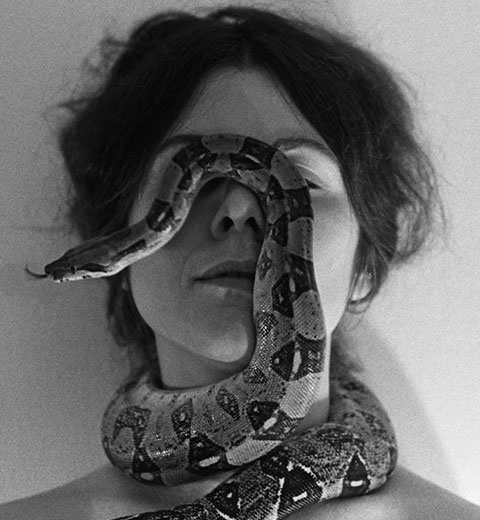
Jane Evelyn Atwood
Jane Evelyn Atwood was born in 1947 in New York and has been living in France since 1971. Her work reflects a deep involvement with her subjects over long periods of time. Fascinated by people and by the idea of exclusion, she has managed to penetrate worlds that most of us do not know, or choose to ignore. She has published several books and was featured in many international magazines. She has received numerous awards for her work, amongst others, the W. Eugene Smith Award (1980), Prix Paris Match (1990) and Leica Oskar Barnack Award (1997).
Jane Evelyn Atwood describes her method of work as ‘obsessive’. She does not move on to a new subject until she feels she has completely understood the one at hand and her own relation to it, and until she believes that her pictures reflect this understanding.
